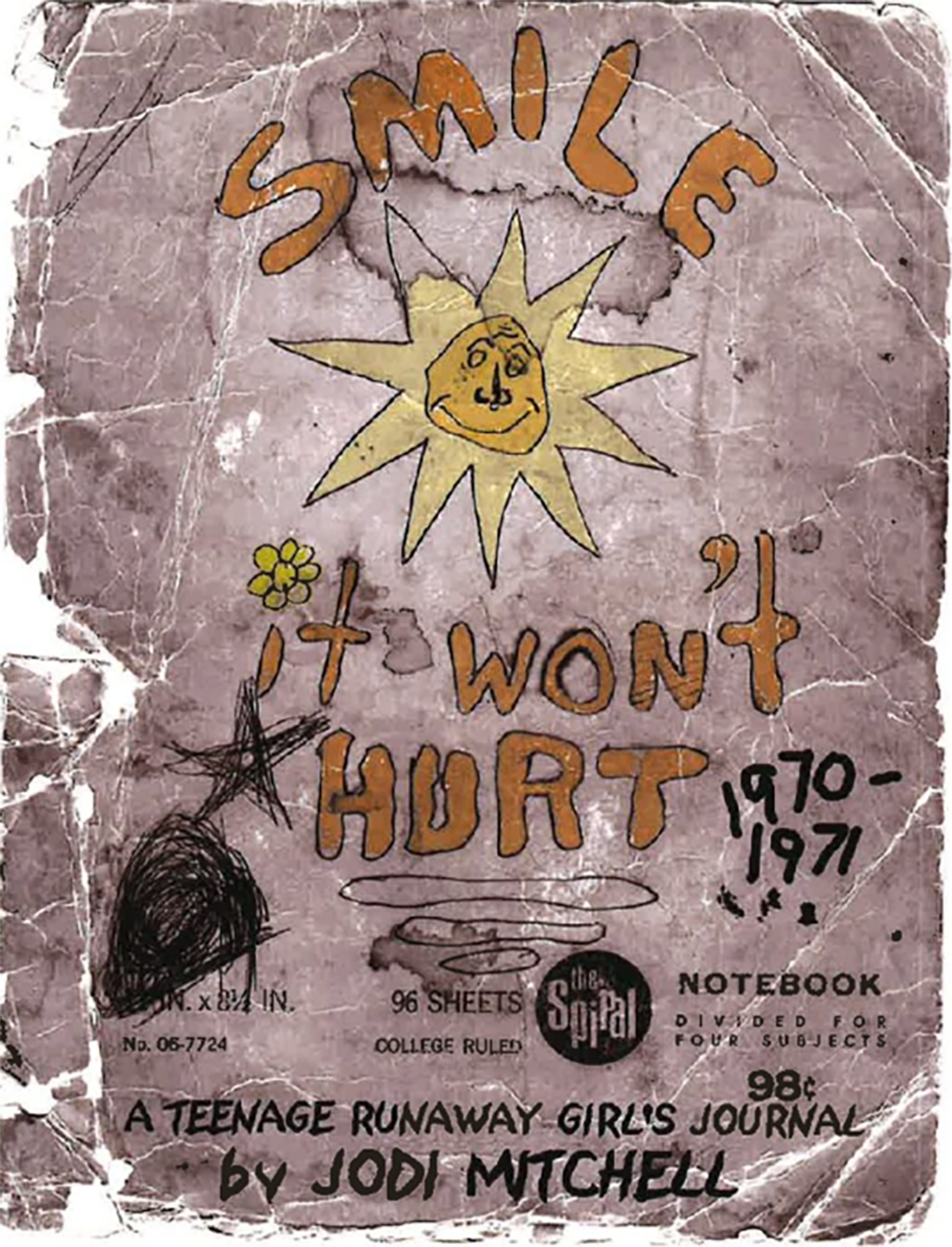
The University of California, Berkeley, has a digital archive of the city’s spirit of revolution in the 1970s. Berkeley was, the site’s introduction explains, “the rare city in the United States where the transformations of the 1960s continued to gain momentum in the 1970s.” There are photographs, flyers, handbooks journals, manifestos, videos and the diaries of teenage runaway Joni Mitchell…
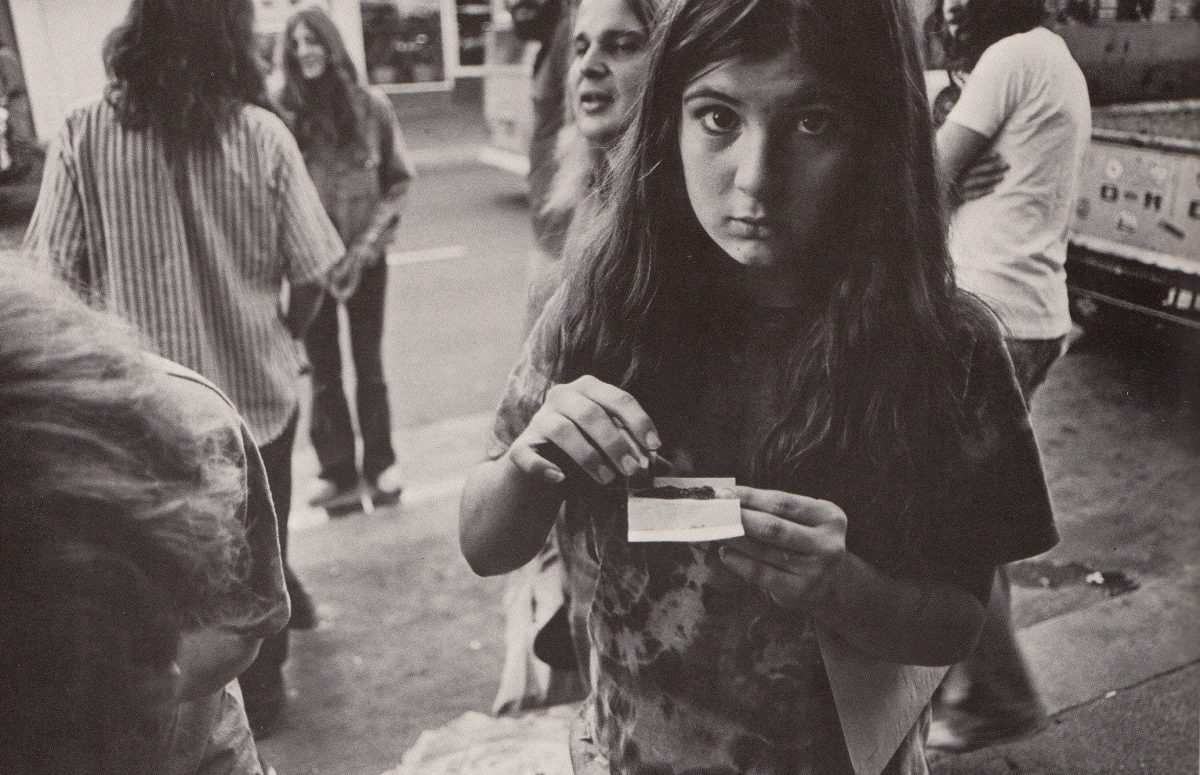
Nacio Jan Brown, Rag Theater: The 2400 Block of Telegraph Avenue, 1969-1973 (Berkeley: Great Star Press, 1975),
Survival Sex
Were the streets safe for young women and teenage girls? The older man in this photo (blow) was pictured lifting the young woman’s shirt and groping her exposed breasts. Photographer Nacio Juan Brown likens the man’s presence to that of a “malign spider hovering in his web”. Mitchell would later write that the street kids were “unaware how truly vulnerable we were”.
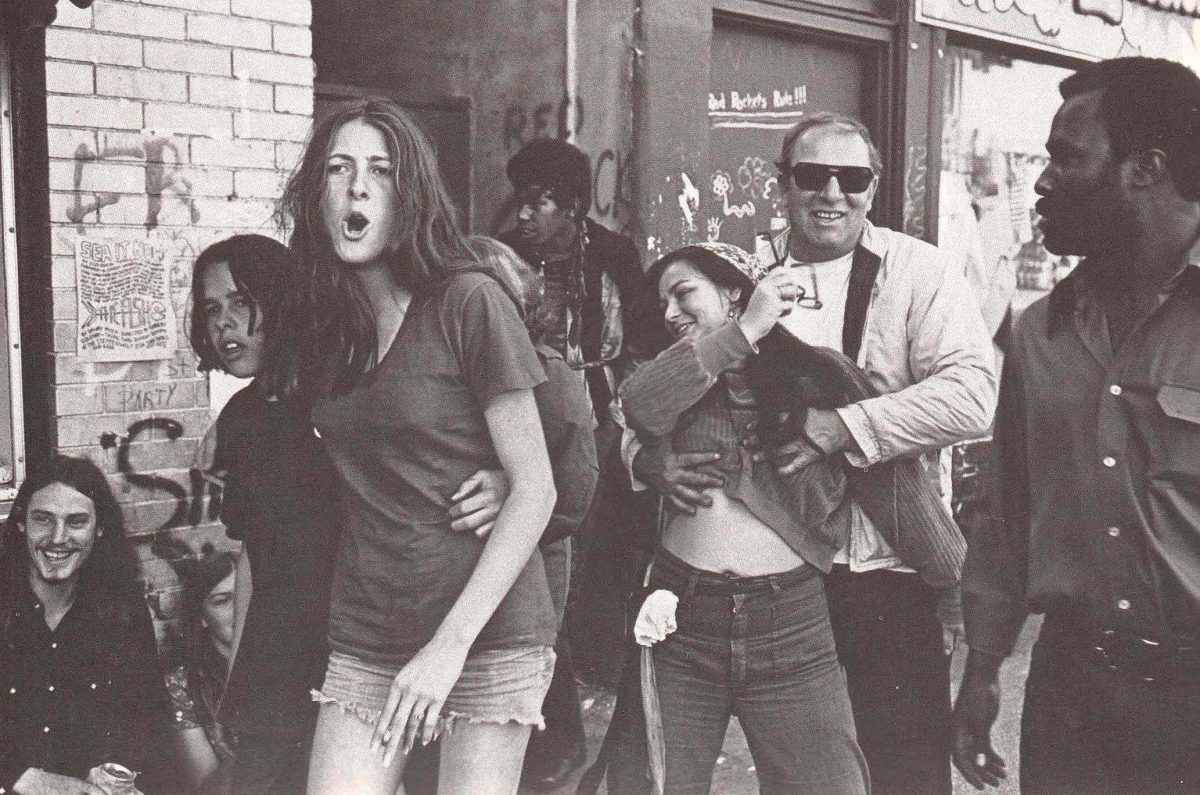
Nacio Jan Brown, Rag Theater: The 2400 Block of Telegraph Avenue, 1969-1973 (Berkeley: Great Star Press, 1975)
Brown’s photos were published Rag Theater. When Mitchell saw them, she remembered, writing to Nacio:
Although I purchased a copy of Rag Theater when it first came out; I was not able to look through it for years. I would glance at it, and find it too emotionally painful to go on…
In some ways, I think, I suffer/ed from survivors guilt and PTSD. I truly came out a survivor in the end, and many others did not. Some of my street kid friends, I ran into many years later, degenerate and crazed in the Tenderloin, their beauty and youth ravaged. And one, who I will call ‘B.’, and who I loved dearly, is now serving life in prison. Yet another young man; oh-so-beautiful, so gentle and hopeful, a talented artist, was committed to Napa State Hospital, drugged on thorazine, and released, still in his teens, in far worse shape than before he was committed by Berkeley authorities, simply because he had been tripping on LSD and acting funny.
…
Pan handling, and crash pads, standing in long lines and eating at the free churches, eventually taking LSD so I could stay awake all night, protecting myself from the predators that only came out at night to prey on the young and unsuspecting. A young girt trying to sleep in a crash pad, always had to preform survival sex. Always. So the answer was to stay awake all night, and sleep in the day on the couches in the student union, until ‘they’ removed the couches (to put an end to this), then sleeping behind bushes, in secret places on campus.
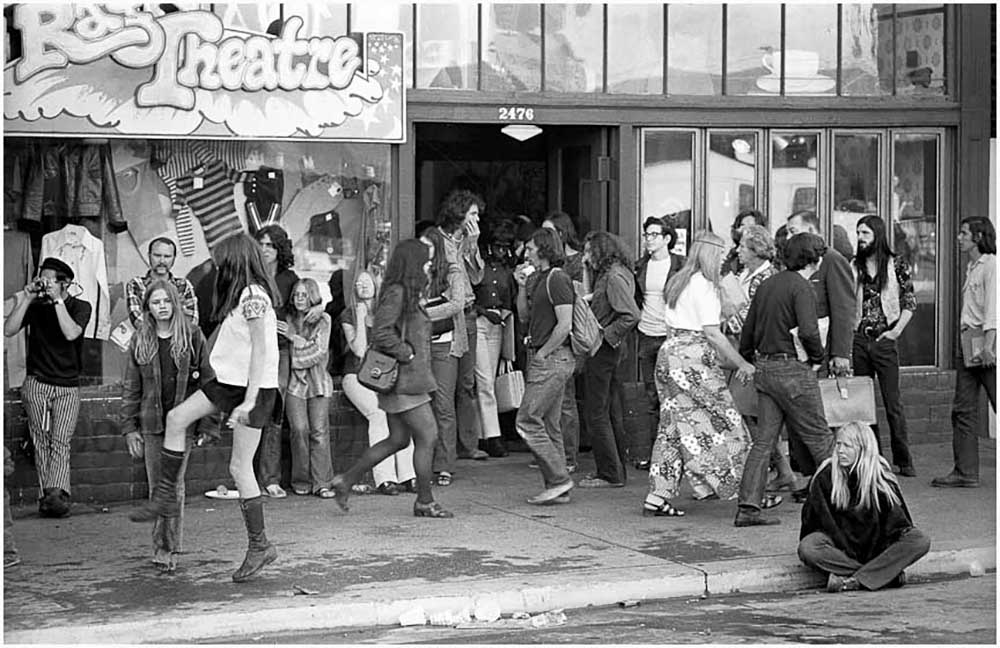
Nacio Jan Brown, Rag Theater: The 2400 block of Telegraph Avenue, 1969-1973 (Berkeley: Great Star Press, 1975)
And there was the older Jewish man in the plaid Pendleton jacket. I knew he was Jewish because of the button he wore pinned to his jacket that read: Jewish Power. He would meet up with me and Maggie every day at 5 PM, by the juniper bush in the concrete planter in the front of Sproul Plaza by the student union steps, the bush is still there by the way, but much larger. He would give me 2 dollars and a can of dog food for Maggie and say the same thing every day: “Call Your Mother.” He said. “Call your mother”.
Crash Pad Procedures
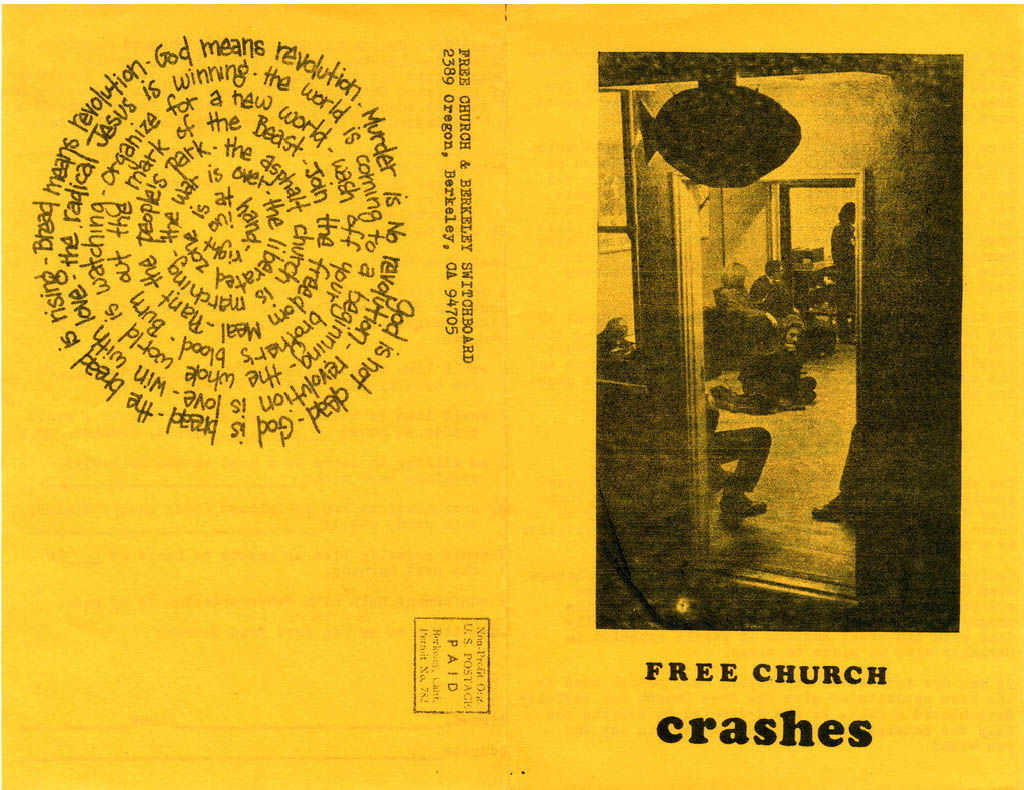
“Free Church Crashes,” n.d., Berkeley Free Church collection, Graduate Theological Union, Berkeley, Calif.
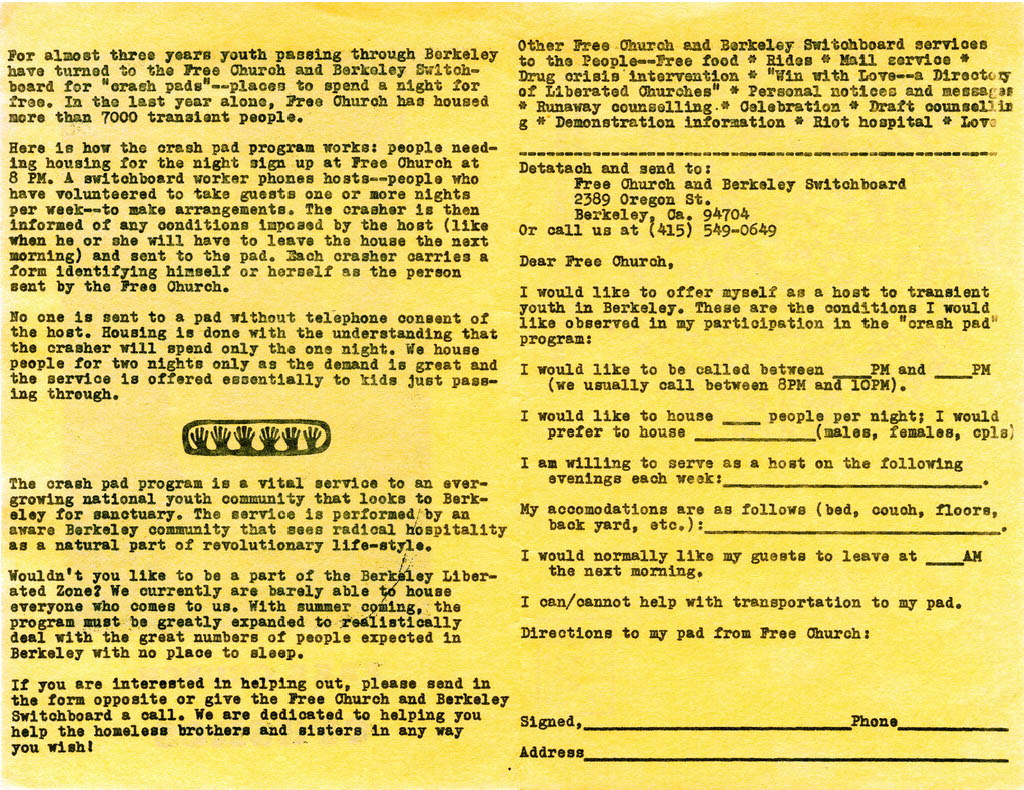

Crash Pad Procedures, from the Berkeley Free Church Switchboard Manual, c. 1970, Berkeley Public Library.
Mitchell used the service;
For a long time, I went to the Berkeley Free Church, facilitated by Richard York, an Episcopal Priest, for a sandwich and a crash pad for the night. Sadly, almost always, these crash pads turned out to be sexually exploitative set-ups. Not because of Richard York, but because many of the people who signed on to volunteer sleeping space in their homes were not on the up and up apparently. Exhausted, I would fall asleep in the spare room and spare bed offered by a Berkeley or Oakland citizen, only to be jumped upon in the middle of the night, expected to provide sex. The alternative to this, was to leave, to go back out into the cold night_which I often did, leaving a stranger’s house, in the middle of the night, far from campus, having to find my way back to familiar ground, alone, scared, tired and cold, always cold.
Nina Simone at Rainbow Sign
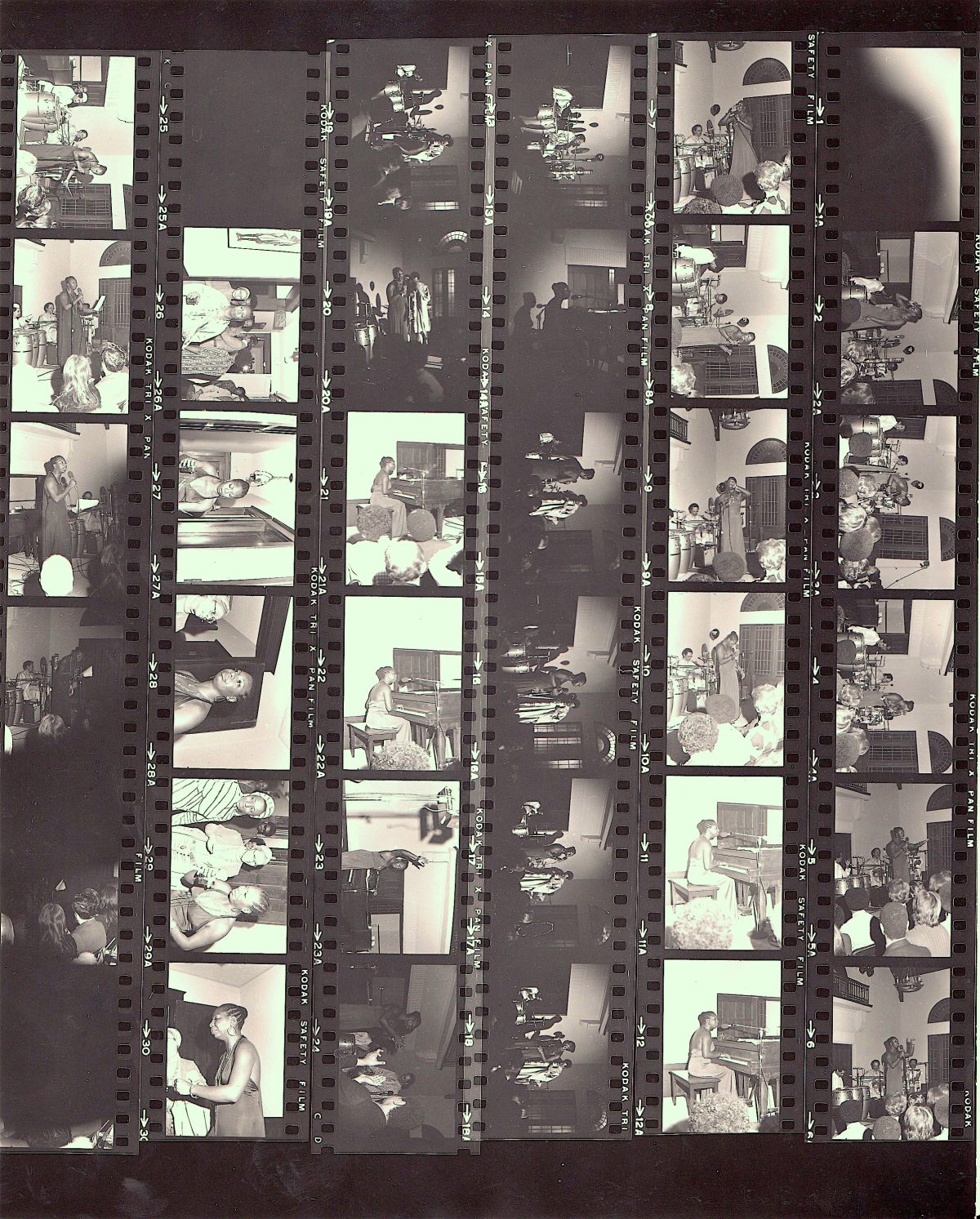
Jonathan Eubanks’ contact sheet (above) comes from when the musician Nina Simone appeared at the Rainbow Sign, whose founder, her friend Mary Ann Pollar, led the city of Berkeley to proclaim “Nina Simone Day” on the occasion of this performance. Rainbow Sign was “somewhere between a Black Nationalist headquarters and middle class social club”, says the site. Between 1971 and 1978, Rainbow Sign, which was founded by 11 black women, offered an on-site restaurant, concerts in a 220-capacity recital hall , art exhibitions, and conferences.
“Your heroes can teach you anything. We want to put these heroes together with the children,” said Polla. “No kid who wants to be a painter can say no to math. If a kid doesn’t like to read, put him together with a poet. Then he’ll not only read but write and put the punctuation in the right place.”
Simone sang To Be Young, Gifted and Black, the song written in honour of her friend, the late Lorraine Hansberry, author of the play a then film Raisin in the Sun. After meeting the press and receiving her proclamations, Simone took time to speak with two young girls in the hallway at Rainbow Sign. Simone asked them why they weren’t school. They shrugged. One said she was going to be a singer, so school didn’t matter. Simone told her that of the next 100 people who came through the door, maybe 90 could sing as well as she did. She then impressed upon them the value of education and hard work.
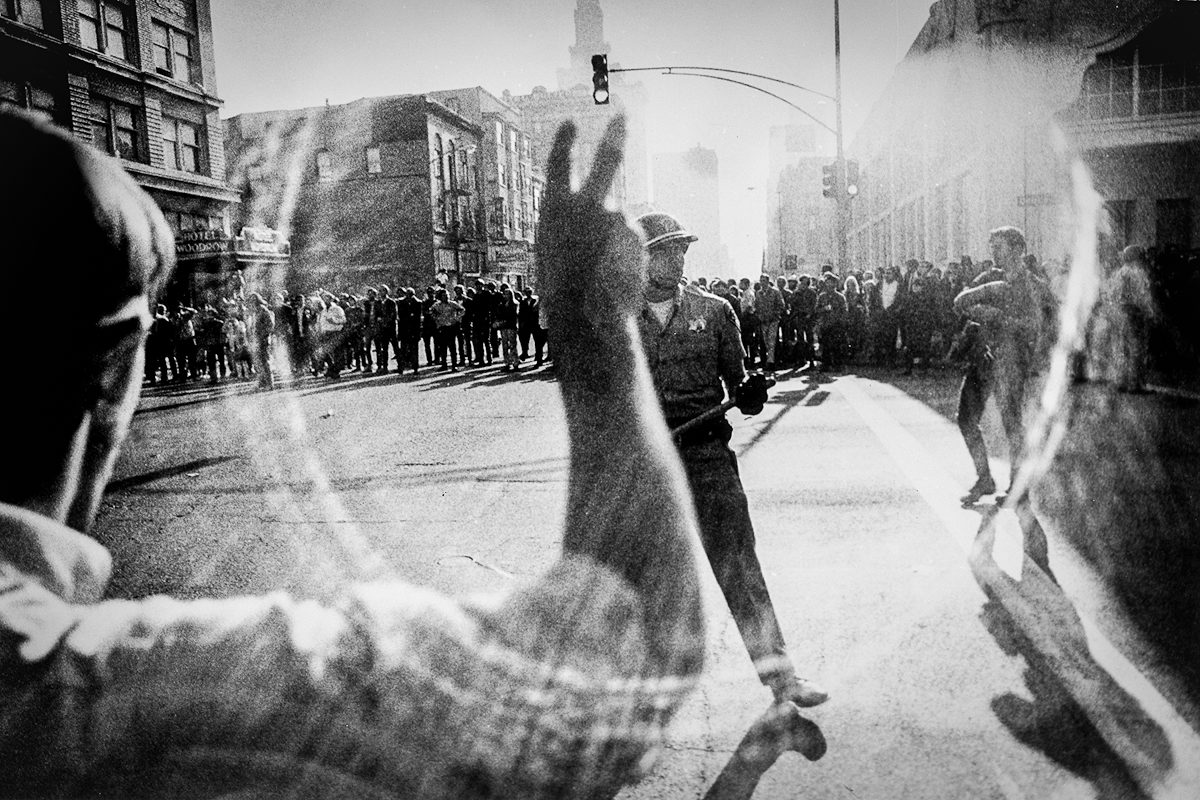
Nacio Jan Brown, photograph of Oakland protest during Stop the Draft Week, October 1967,
“When I began photographing on Telegraph Avenue, the scene ran the gamut: flower children and riots, hard drugs and Jesus freaks, left-wing intellectuals and psychedelics, natural foods and runaways. Somehow this variety worked together.”
— Nacio Jan Brown
Freedom To Be
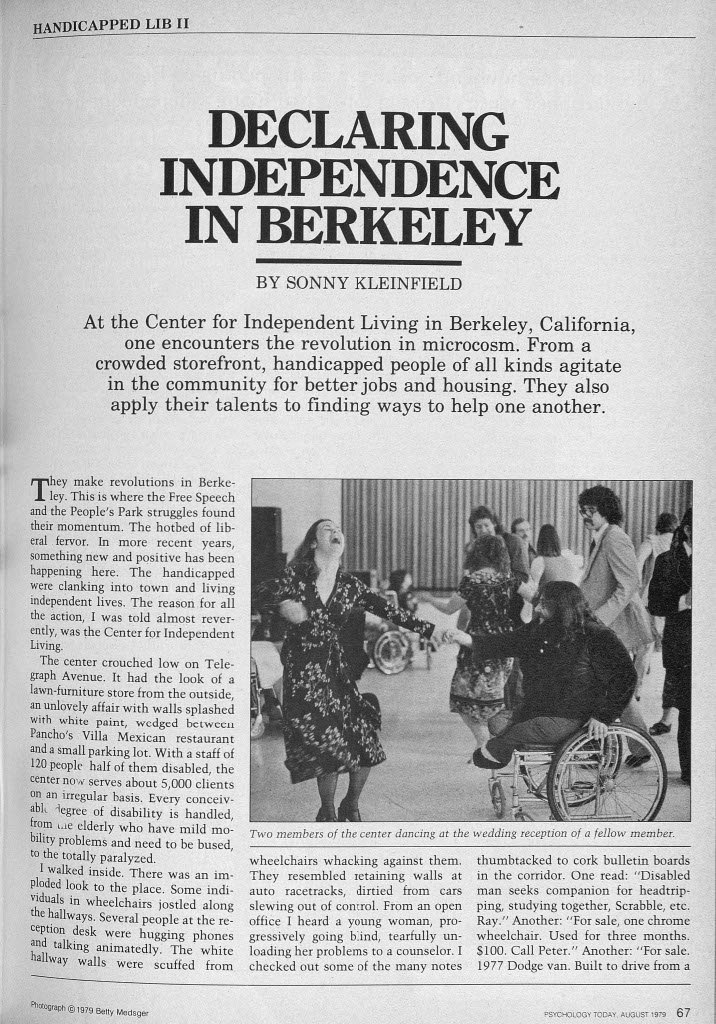
In the fight for equality, Berkeley was pivotal. As the site says:
“By the end of the 1970s, the successes of Berkeley’s independent living movement and civil rights demonstrations had reached national acclaim. In 1977, people with disabilities and allies took over the Department of Health, Education, and Welfare’s San Francisco office for twenty-five days, making it the longest sit-in ever recorded in history. Activists demanded that Section 504 of the Rehabilitation Act of 1973 be implemented, which would guarantee civil rights protection for people with disabilities. The sit-in brought together cross-disability coalitions of folks advocating for their rights with civil rights advocacy organizations, like the Black Panthers, who delivered food and supplies to those inside.”
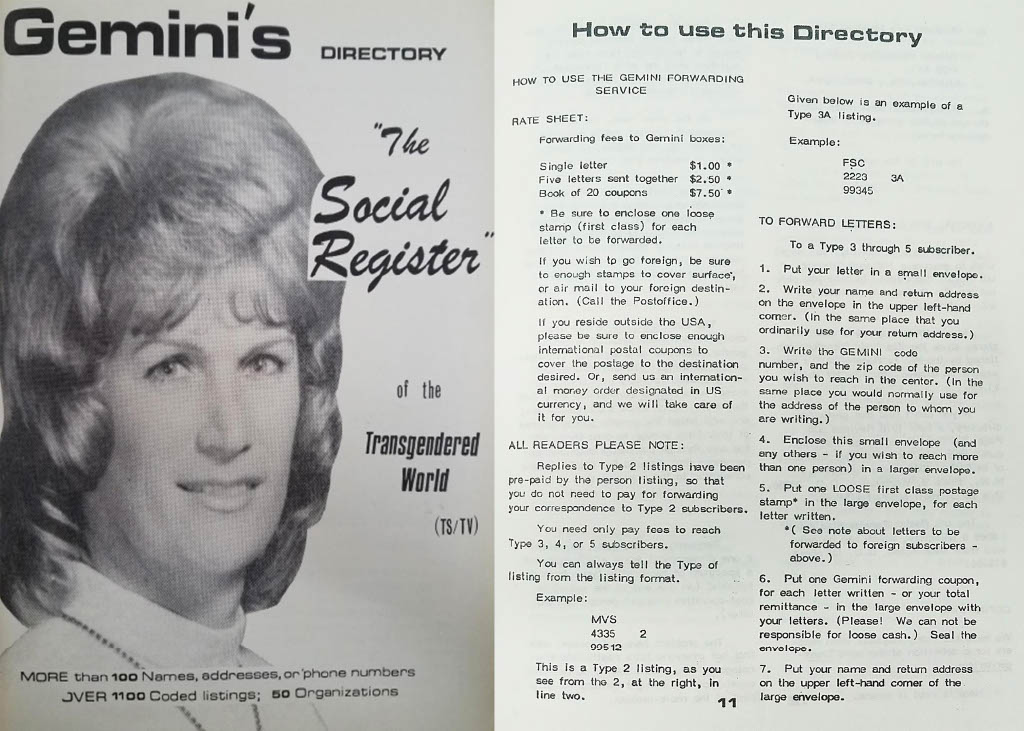
Gemini Society was an offshoot of Salmacis Society, a transgender rights organization founded by Sally Anne Douglas and located in the South Bay. Without Grindr, Tinder, or Facebook groups trans folks had to follow an intricate mailing process to connect with one another using this book. People sent information to the directory from all over the world, not just North America. The breakdown of cost to participate in the publication reveals the inaccessibility of the service, as trans people had to pay to receive and advertise in it.
And there was the Berkeley Women’s Music Collective, founded in 1973. “Members of the Collective, all lesbian feminists, soon began writing songs about the personal experience and shared struggle of finding freedom from patriarchy. With the women’s liberation movement in full swing, a passionate audience was ready and waiting.”
In this video. Suzanne Shanbaum performs Fury, accompanied by other members of the Berkeley Women’s Music Collective. The performance was filmed on KQED’s community access program Open Studio around 1975. Nancy Vogl, Nancy Henderson and Jake Lampert sing backing vocals.
See more here:
Would you like to support Flashbak?
Please consider making a donation to our site. We don't want to rely on ads to bring you the best of visual culture. You can also support us by signing up to our Mailing List. And you can also follow us on Facebook, Instagram and Twitter. For great art and culture delivered to your door, visit our shop.



